Before the war, one of the most elegant hotels in the capital was the Royal Hotel, or Grand Hotel Royal, built in 1896 on a huge plot between the Outer Ring Road and Hársfa Street. Its handover was timed to open for the millennium celebrations to offer a luxury hotel to a mass of upscale, solvent guests. Nearly half a century after the opening, famous guests visited here, and the Royal also boasted a number of permanent residents, such as the writer Gyula Krúdy.
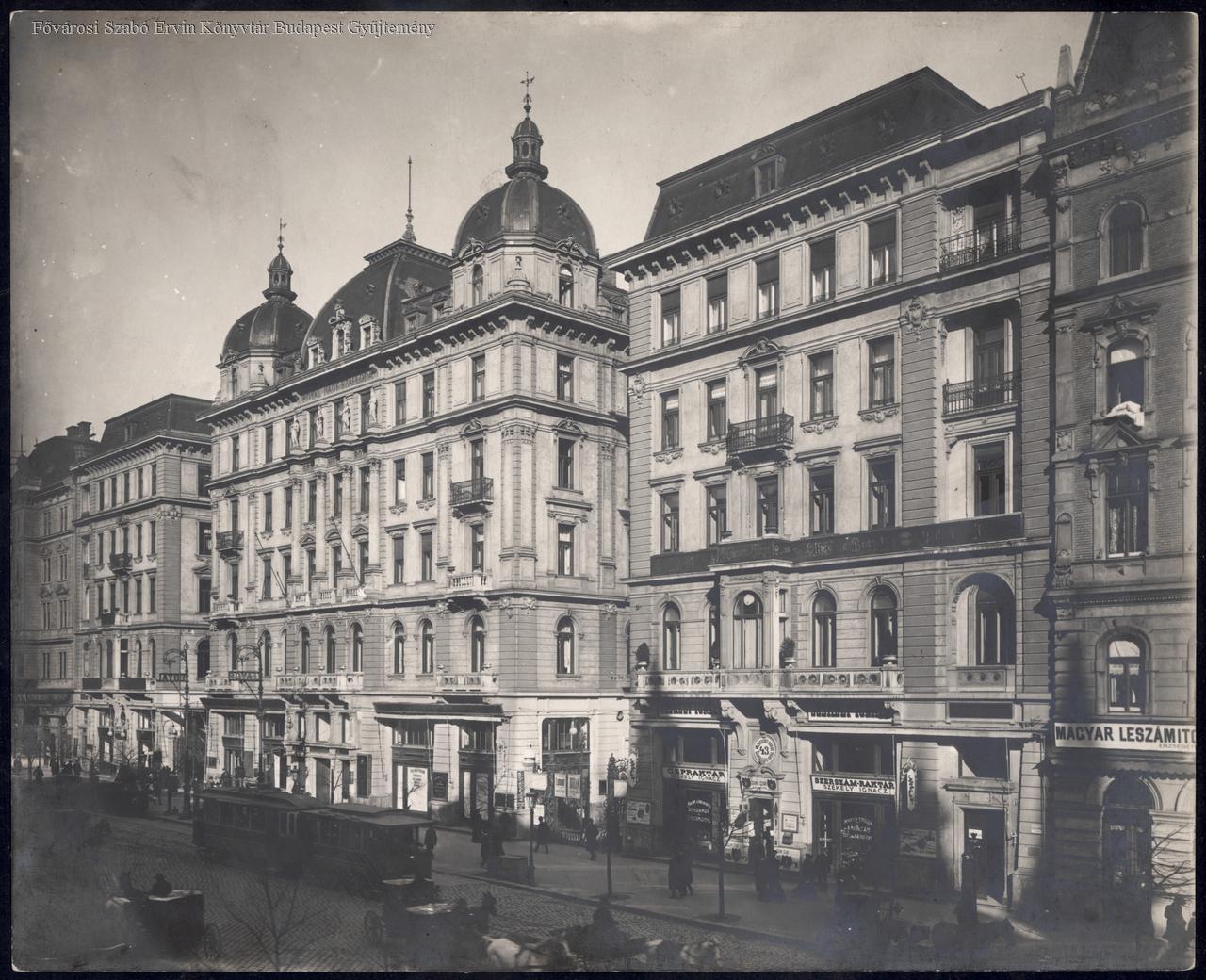
The original building of the Royal Hotel was designed by architect Ray Rezső and opened in 1896. The photo of Mór Erdélyi was made around 1900 (Source: FSZEK Budapest Collection)
The Royal’s first heyday ended with World War II: it was occupied and used as a seat by the Gestapo, and in the second half of the 1940s, offices were established in the former luxury hotel. Then, from 1953, the conversion of the building back to a hotel began, but it was completely burnt out during the Revolution and War of Independence of 1956. It was then, after the revolution, that the decision was made to make the Royal a luxury hotel again.
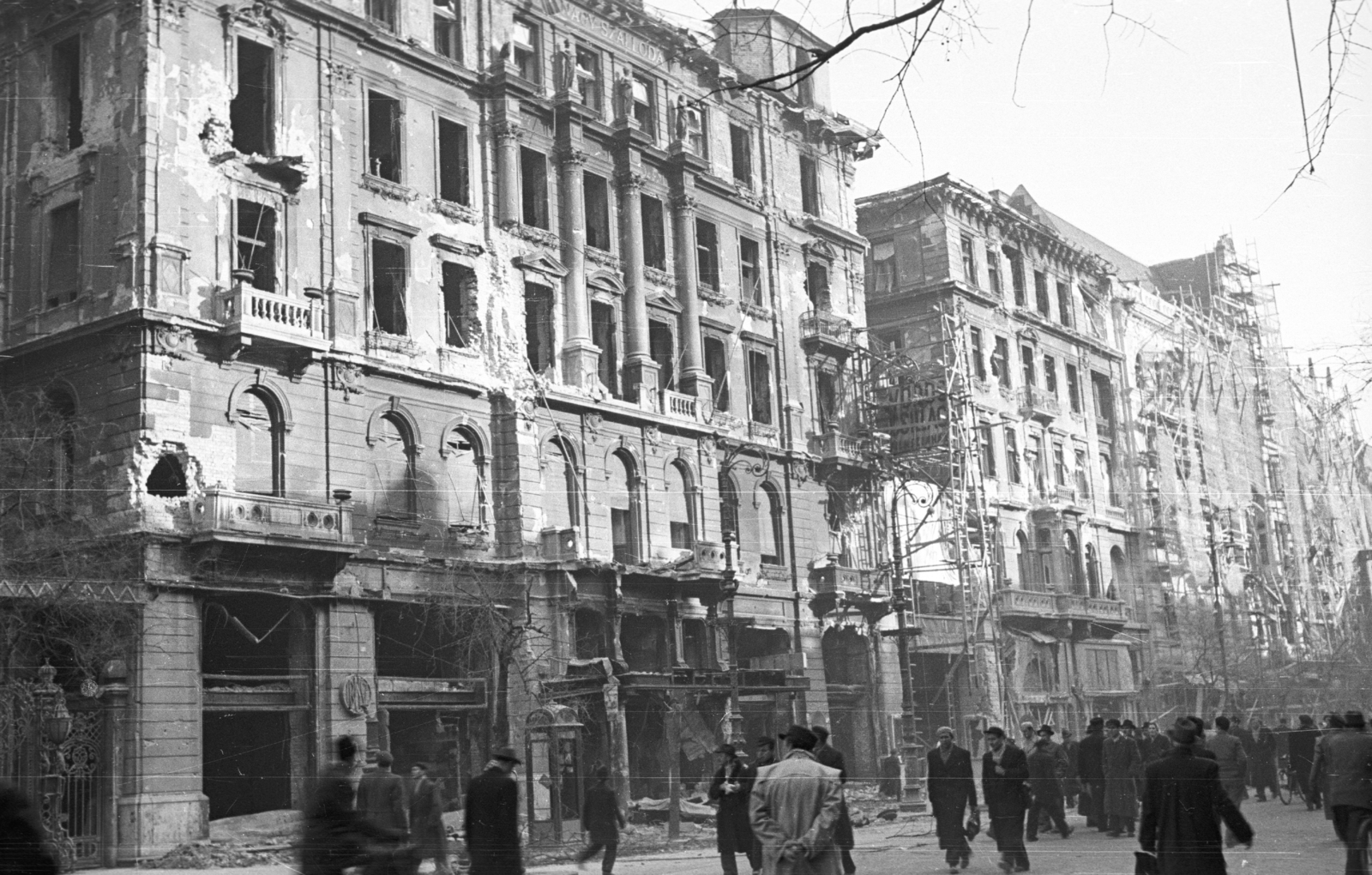
The Royal Hotel building was badly damaged during the Revolution and War of Independence of 1956 (Source: Fortepan / No.: 40211)
Construction began in 1957 and lasted four years. The protracted work was also discussed at the highest levels, and in December 1960, at a meeting of members of parliament in Budapest, it was decided to urge the handover of the hostel in a competent place.
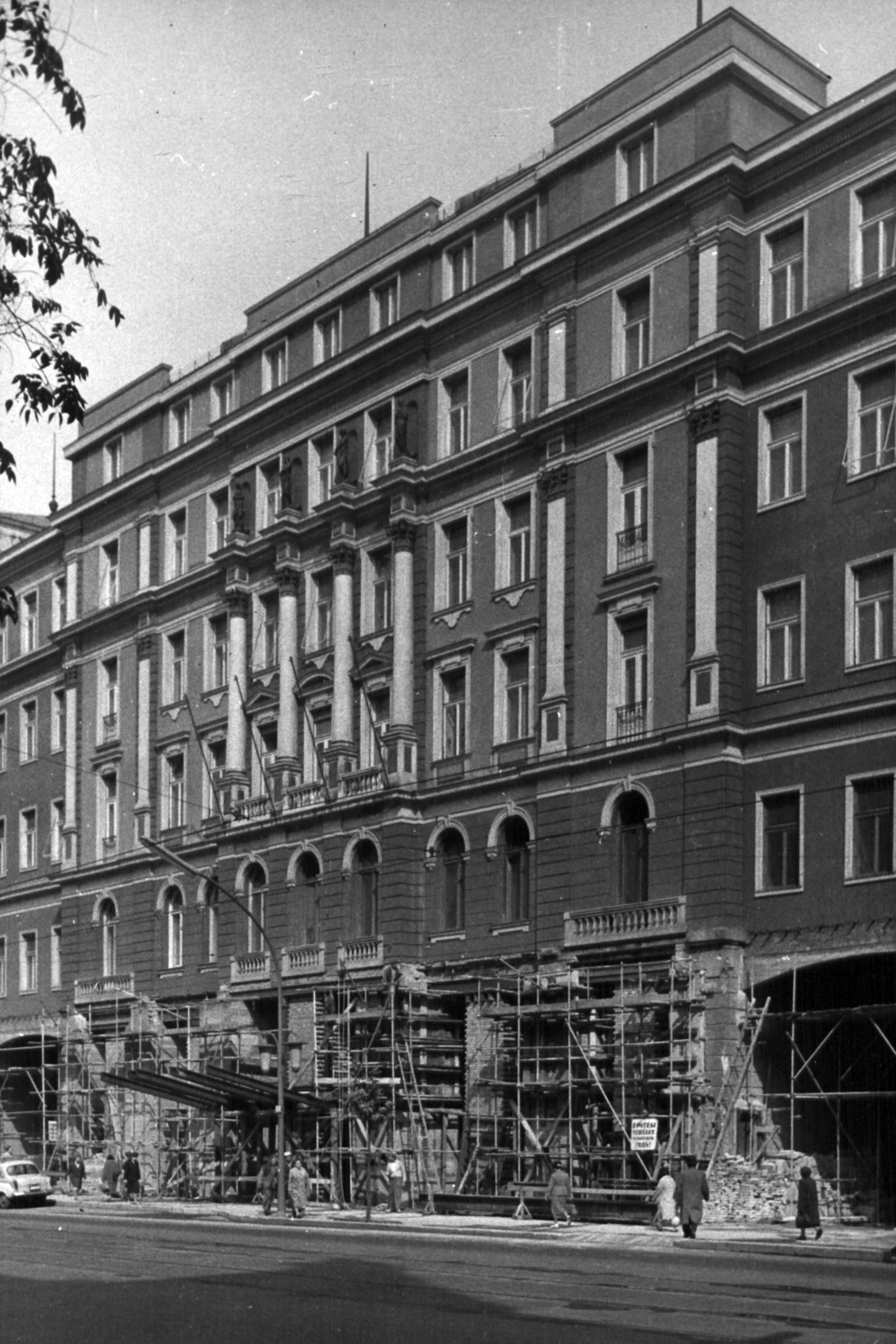
Reconstruction of the hostel in 1960 (Source: Fortepan / Budapest Archives. Reference No.: HU_BFL_XV_19_c_11)
The designer of the reconstruction of the Royal Hotel was architect István Janáky, who designed a new facade, connecting wings and interiors. Virtually nothing was left of the interior of the turn-of-the-century building, and it was replaced by a period-style interior design. The walls of the foyer were decorated with the work of the ceramic artist Géza Mészáros, the majolica relief depicting the four seasons, and chandeliers made of plexiglass hung on the ceiling. The five-storey hotel has several restaurants, bars, a patisserie, a post office, a tailor’s shop and a hairdresser.
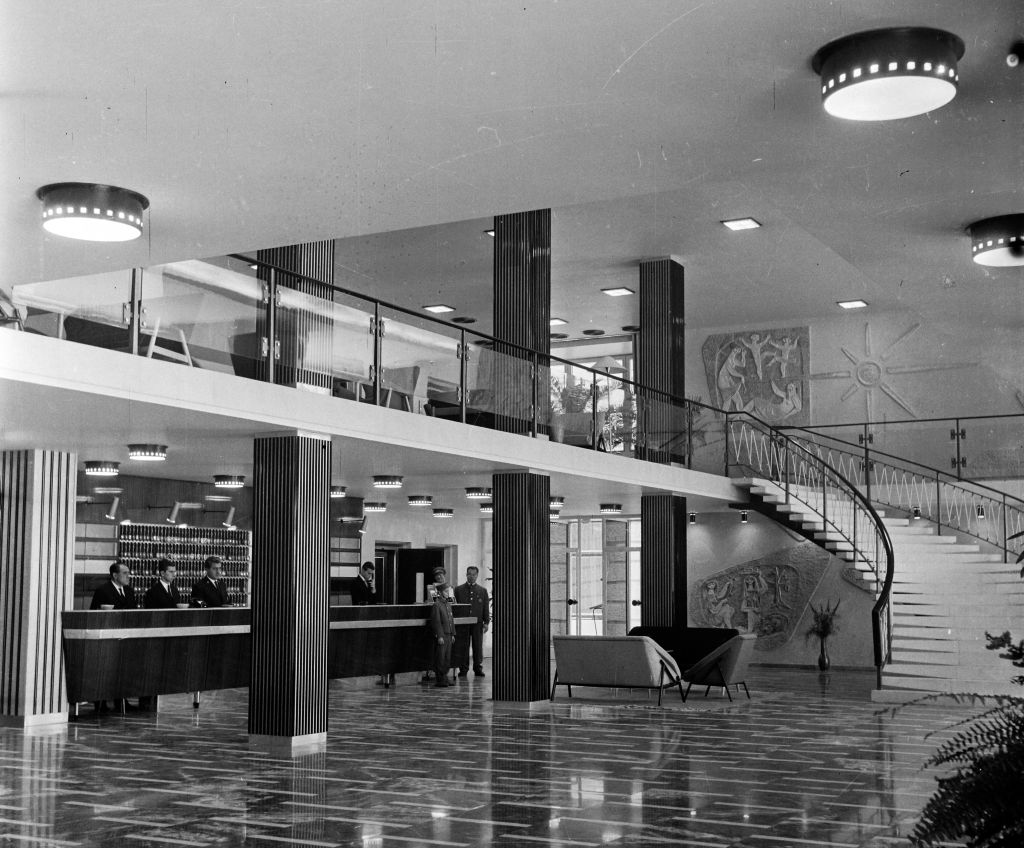 The reception of the Royal Grand Hotel, reopened in 1961, was furnished in luxury at the time (Source: Fortepan / No.: 111273)
The reception of the Royal Grand Hotel, reopened in 1961, was furnished in luxury at the time (Source: Fortepan / No.: 111273)
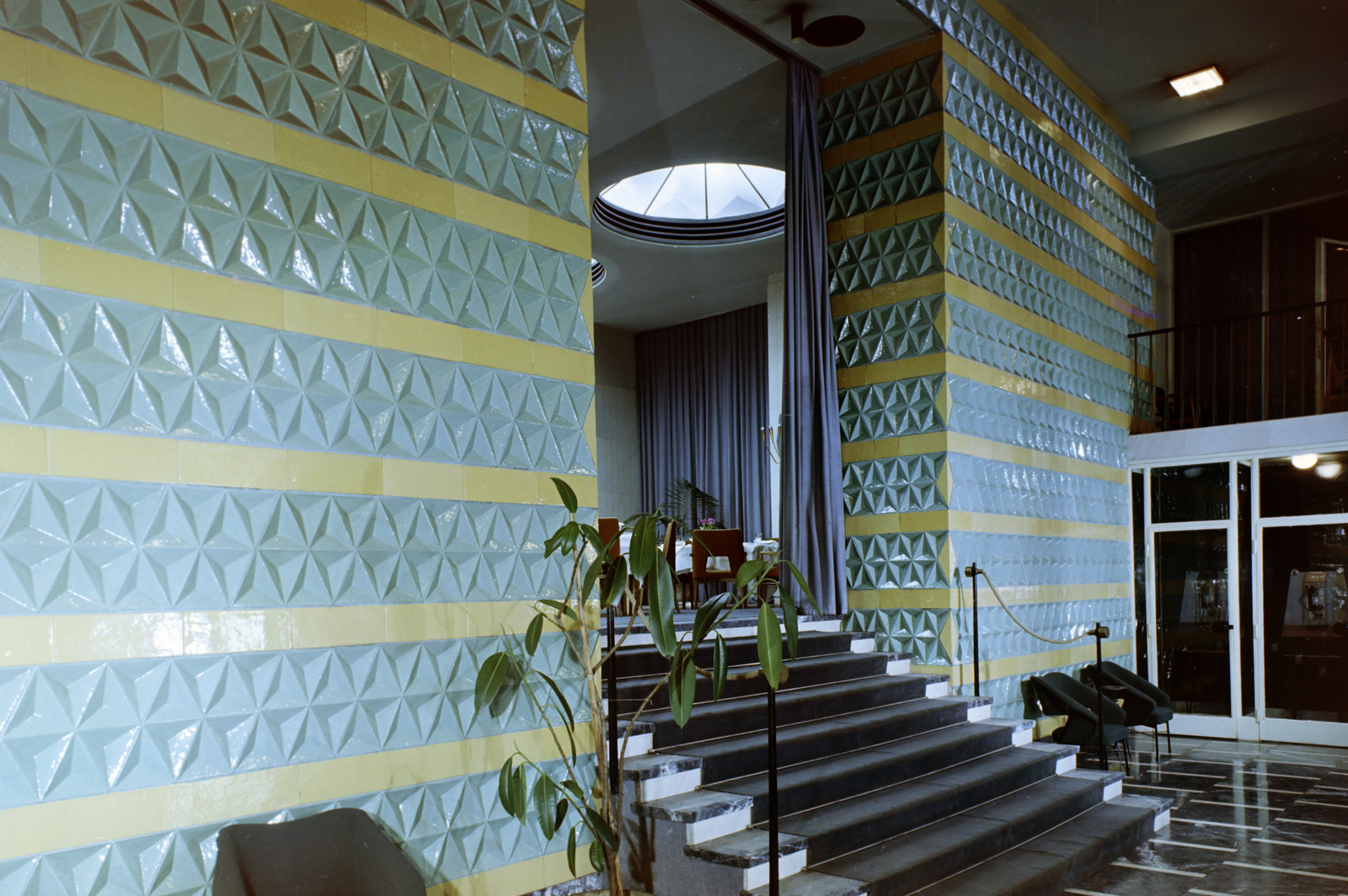 Modern interior of the hostel in 1961 (Source: Fortepan / Main photo)
Modern interior of the hostel in 1961 (Source: Fortepan / Main photo)
On 11 August 1961, before the opening, the Magyar Nemzet described the old-new hotel as follows:
“Instead of the previous 297, the Royal has 367 rooms for 622 guests. The three-room apartment also has a radio, television and telephone. The two-room suites with bathroom also have a radio and telephone. The rooms are decorated with modern upholstered furniture made of five types of wood: walnut, cherry, oak, maple and ash. Yet standard furniture is not the furnishing of any room. Nine styles were used by the makers of the Royal Hotel’s furniture. The walls of the rooms are decorated with original works by renowned artists.”
Besides, what did luxury mean in Budapest in 1961? Of the 367 rooms, only 50 did not have a private bathroom, but all rooms were equipped with a radio and telephone, and, as the article highlighted, the two-room and multi-room suites also had a television! The floors of the rooms were covered with Hungarian-made, hand-knotted rugs, and the restaurants were covered with silver cutlery decorated with the Royal logo.
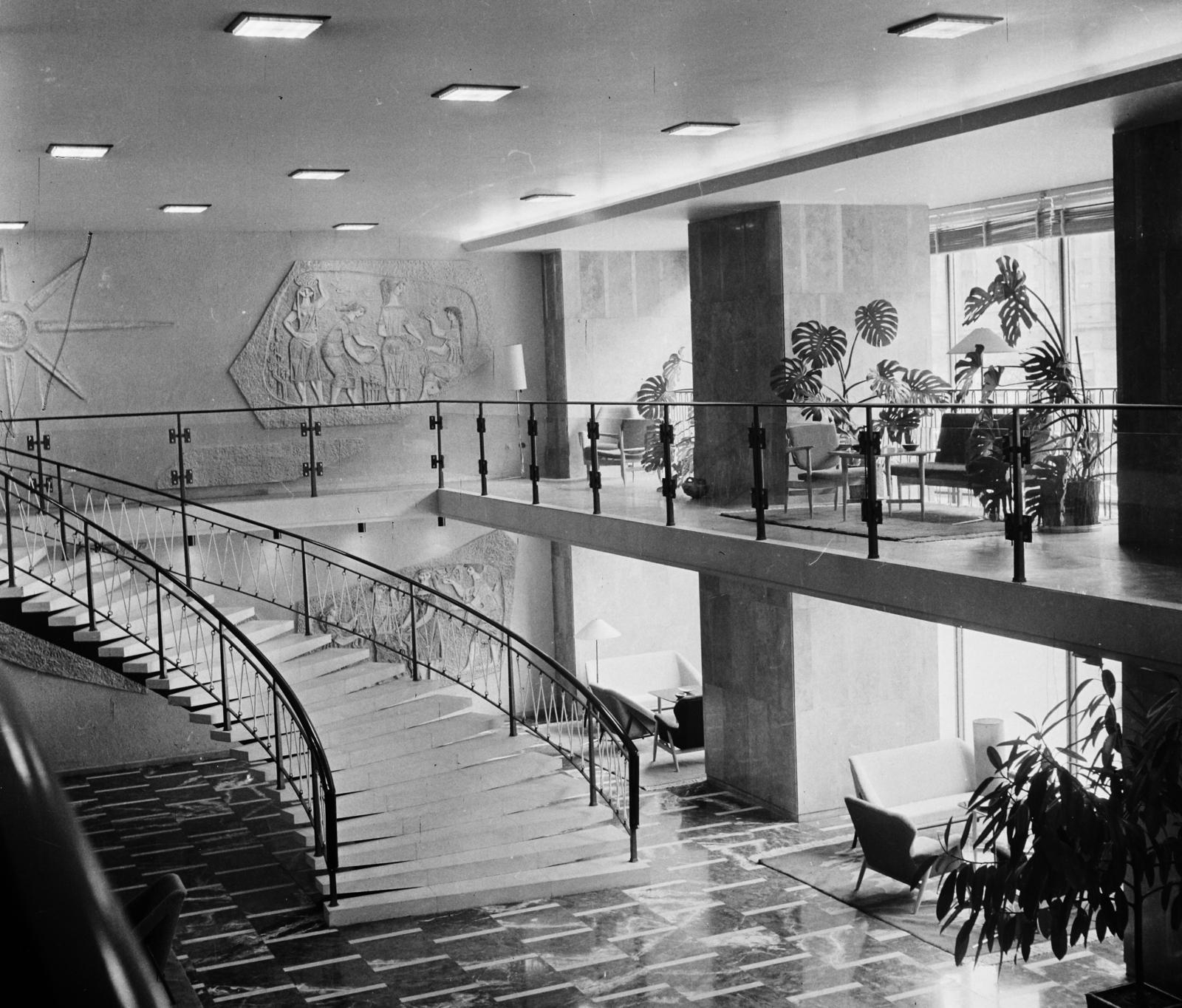
Hall designed according to the taste of the 1960s (Source: Fortepan / No.: 111276)
Moreover, guests were able to redirect telephone calls anywhere within the hostel with special technical equipment. The structure, called Telinform, was described in Hétfői Hírek on 24 July 1961 as follows:
“The Royal Hotel’s telephone exchange has one more novelty: all hotel guests can request a miniature“ Telinform ”telephone. With a Hungarian-designed and pocket-sized device that fits in the pocket, one can connect to the "Royal Center" throughout the hotel, transfer a call connected to their room, for example to their restaurant table or lobby, or, if they prefer, they can make a call from the barber's chair.”
The grand opening took place on 21 August 1961. In fact, the hostel was already in operation at that time, as a group of 40 French tourists had lived there for three days, because could not be accommodated elsewhere in Budapest. In the following days, an Italian tourist group as well as Belgian, Swiss and Indian guests arrived at the hotel.
The former large hall of the Royal Hotel, which has been operating as a cinema since 1915, has been opened earlier: the Red Star cinema has been operating here since Christmas 1959, the entrance to which was still open from Hársfa Street. The entrance to the cinema from the Outer Ring Road only opened with the hotel in 1961.
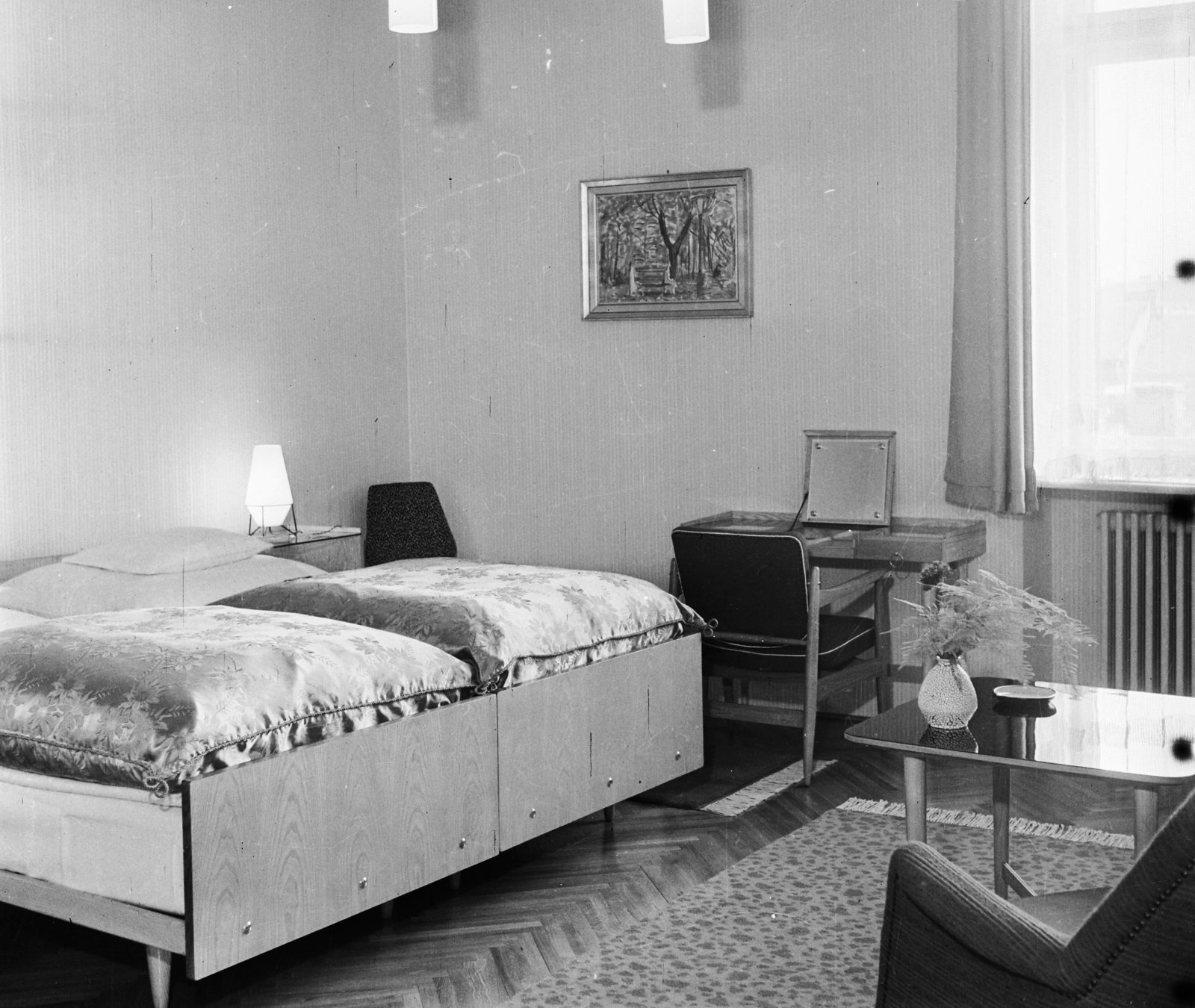
One of the rooms of the luxury hotel in 1961 (Source: Fortepan / No.: 111277)
Luxury was not just about applying equipment and technical achievements at Royal. For the single and double rooms one had to pay 50-180 forints a day, for the two-room suites 270-280 forints a day, and for the three-room suites 370-380 forints a day, while the average Hungarian salary at that time was 1,600 forints a month.
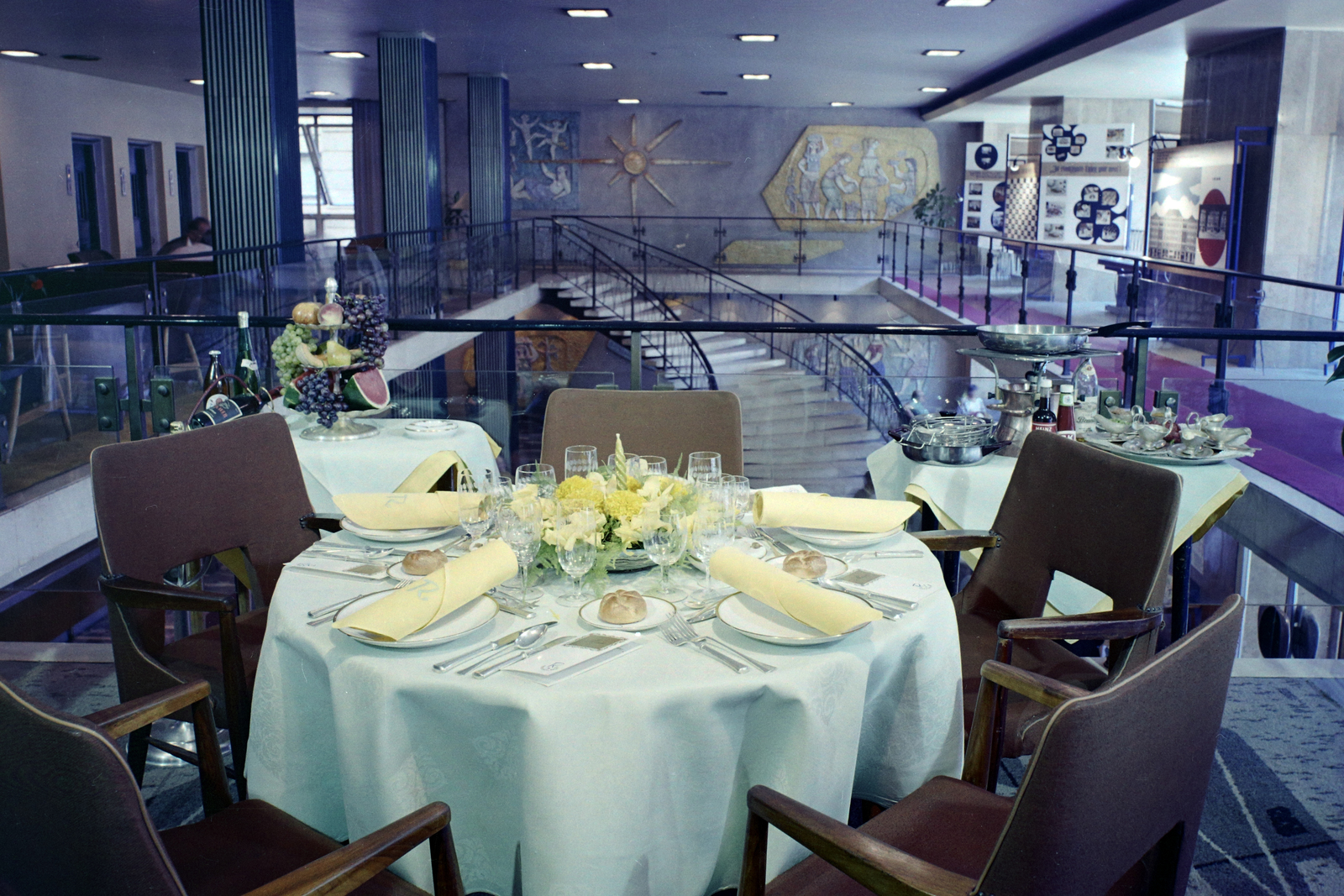
The hotel's hall a decade later, in 1972 (Source: Fortepan / No.: 111184)
The most modern and largest hotel in the country at that time - only the length of the corridors reached 2 km - was the flagship of Budapest's tourism in the 1960s, whose reputation was only strengthened by the fact that in August 1963 it was under quarantine for weeks, since one employee had symptoms of smallpox. During the weeks of quarantine the stranded guests spent their time having fun, who eventually brought the hostel a good reputation for providing adequate service even in such extreme conditions.
The hotel operated until 1991, although by that time its old light had worn out. In the 1990s, only the cinema operated, then after a complete renovation, in 2003, a luxury hotel reopened in the building.
Cover Photo: The Royal Hotel reopened in 1961, its facade and interiors have been completely remodelled (Source: Fortepan / No.: 109240)

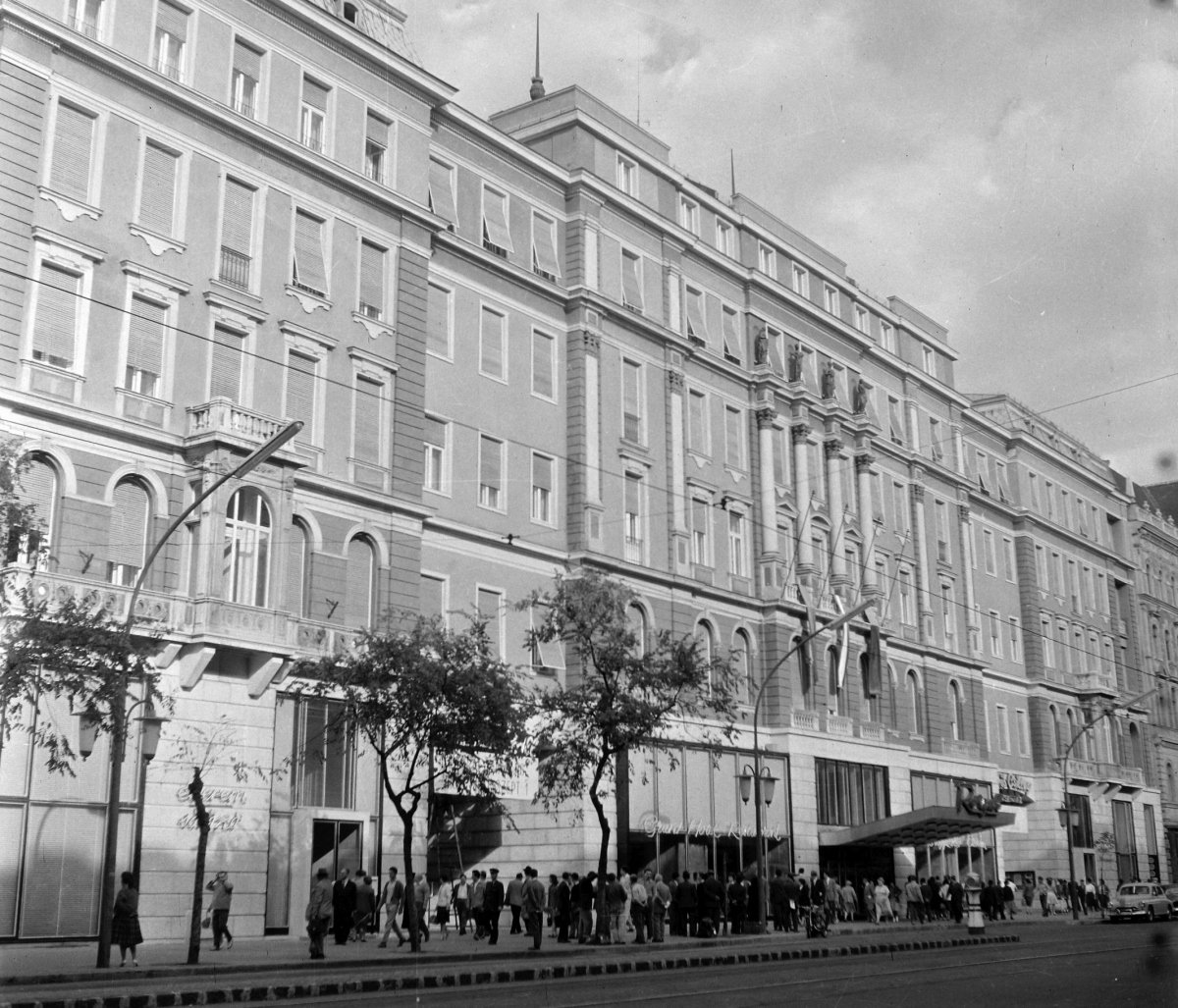


































Hozzászólások
Log in or register to comment!
Login Registration